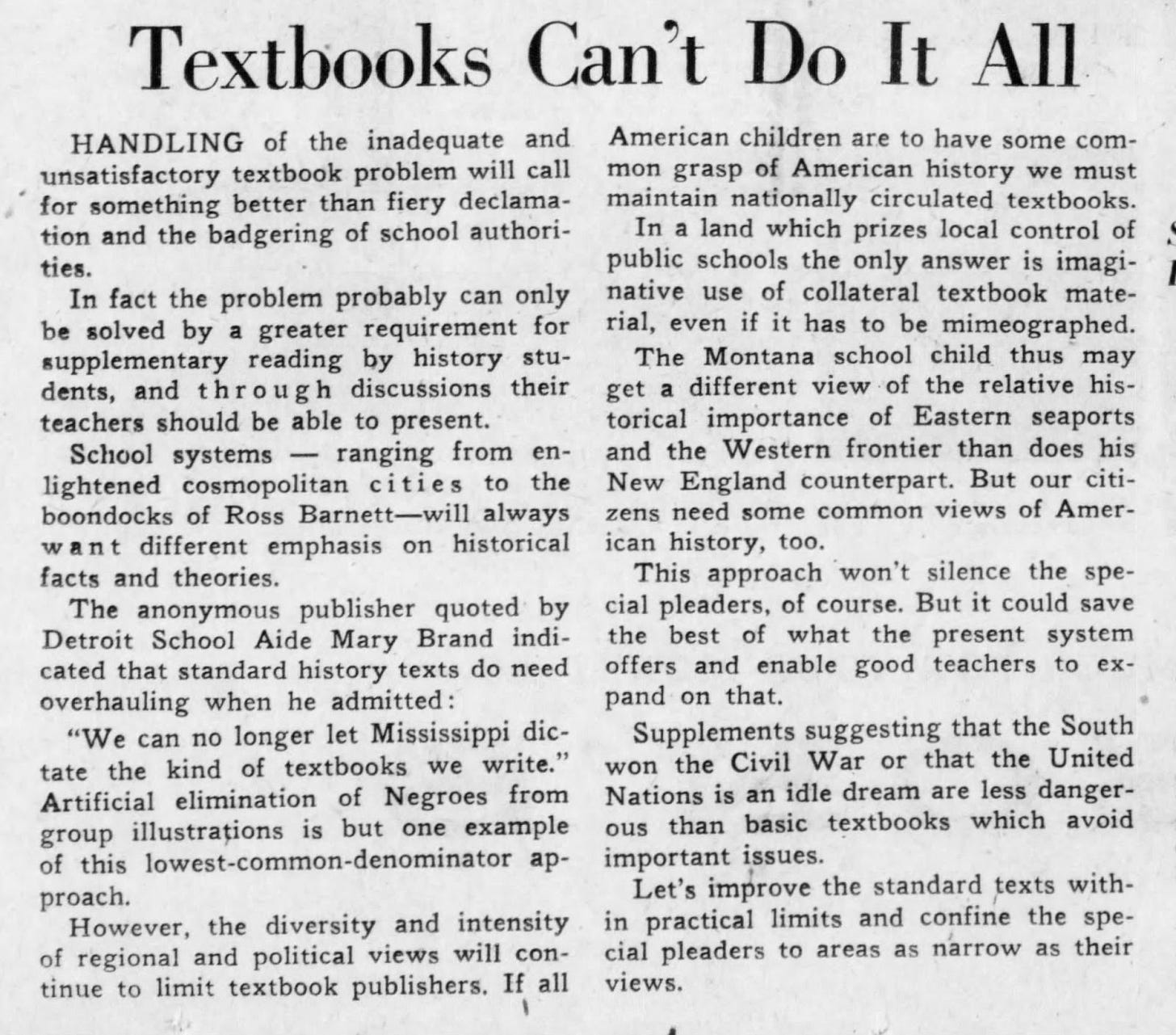When MLK was First Whitewashed in Schools
The fallout over a 1966 California textbook
Hello, darling subscriber,
And welcome to the end of another gray week in January, at least here in NY. I hope you’re faring better than I am determining when one day ends and the next day starts. It all just kind of blobs together, doesn’t it? And speaking of blobs of time, I’d like to discuss one blob that happened a few blobs ago: MLK Day.
As usual on the holiday, some of my fave historians remembered poignant quotes from the civil rights icon:


Others went with a predictable pick-and-choose-an-out-of-context-quote approach:

The selective historical memory of dingbats like Rubio got me thinking: when and why did MLK’s legacy get so watered down, and what does it teach us about the whitewashing of Black history writ large?
To explore these questions, let’s excavate a contentious battle over a California textbook in the 1960s that has particular resonance today.

Recall from an earlier newsletter that through the 1950s, the presentation of Black history in textbooks was... bad. Very bad. Many textbooks still promoted Lost Cause mythology, which held that slaveholders were terrific people: “One may say that on the average plantation the slaves were not harshly treated,” read one popular text used in advanced high school courses across the country. “Many of the owners were kindly, humane men.”1 In another nod to Lost Cause mythology, sections on Reconstruction typically presented Black citizens as undeserving of the voting rights they acquired after the Civil War. Even one of the most progressive books of 1961, called Rise of the American Nation, referred to Reconstruction as “one of the darkest chapters in the life of the nation.”
And more often than not, by the 1960s, Black history was simply absent from history textbooks. In one notable example, authors of a book for 8th graders listed a series of “Documents of Freedom” that included the Declaration of Independence and Constitution but omitted the Emancipation Proclamation,2 kind of like going on the Family Feud, being asked to name places where you burn firewood, and getting all the answers except fireplace.
As the 60s wore on, textbook publishers came under mounting pressure to fill the ludicrous gaps in history. Protests began in Detroit, where Black activists called out the city for “a situation in which the negro is made to pay tax dollars for his own debasement” in schoolbooks.3 The brouhaha...
…led the Detroit Board of Education to add supplementary material about Black history to its curriculum. Large cities like Newark, New York, and Cleveland, which also had growing percentages of minority residents, followed suit. And in the mid-60s, a publisher called Benziger Brothers, seeing which way "the history wind was blowing,”4 decided that they wanted to publish one of the country’s first fully-integrated history textbooks, where Black history was included in the national narrative, not just added alongside it.
They tapped a Black historian named John Hope Franklin to spearhead the effort.




